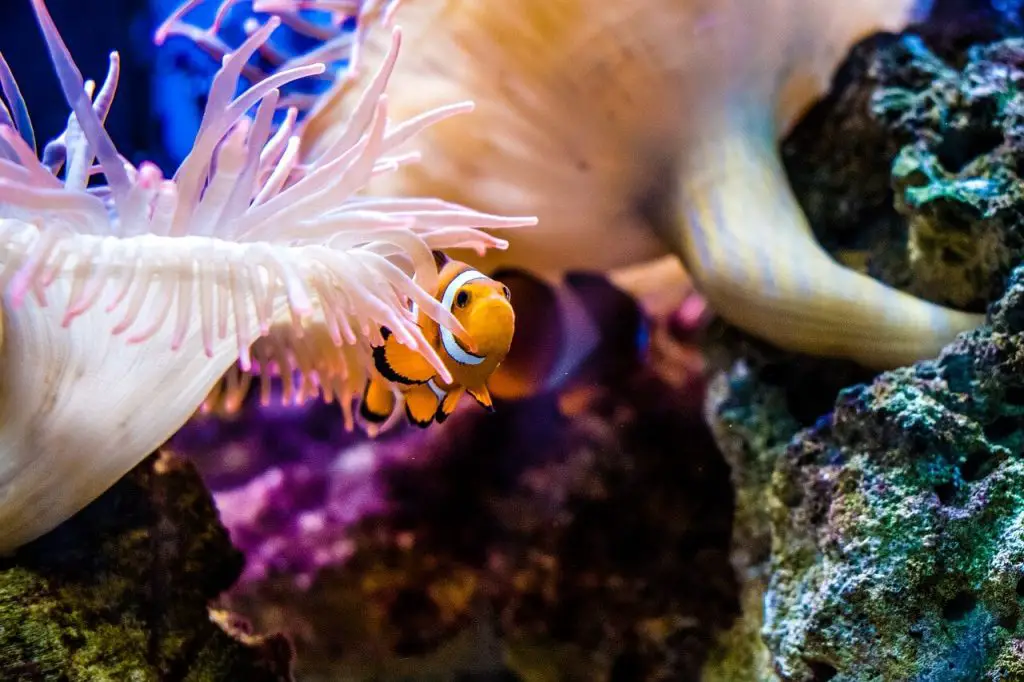This post may contain affiliate links. As an amazon associate I earn from qualifying purchase. Learn more
If you are interested in finding the best corals for your clownfish to host, you are in the right place. These five corals are great anemone alternatives and an excellent addition to any reef tank.

The first fish I got for my saltwater aquarium were two juvenile clownfish. The idea for this project was to set up an aquarium where I could watch the interaction between the clownfish and anemones.
I was always fascinated by this symbiotic relationship, so I decided to give it a try. To my utter disappointment, I learn that you can’t have an anemone in a new tank. Technically you could, but it’s not recommended because the chances of anemones survival are much lower.
I decided to wait until my tank was mature enough to put an anemone. However, I didn’t want to look in an empty tank, so I started to look for anemone alternatives.
Based on my research, captive-bred clownfish host some types of corals. Granted, it’s not even close to the relationship clownfish, and anemones have, but it’s something.
If you are interested to learn what those corals are, keep reading. I currently have two of these corals in my tank, but my clownfish still refuse to host any of them. Maybe you can have better luck.
Contents
Toadstool Coral
The toadstool coral is one of the most common corals in the saltwater aquarium industry, even though it is not as popular as it used to be. They belong in the soft coral group, making them excellent coral for beginners.
They resemble a mushroom, therefore the name Toadstool coral. These corals can grow big in home aquariums and are excellent corals for your clownfish to host.
Green Star Polyp
The green star polyp was the first coral I got for my reef tank. They are hardy corals, very forgiving, and can thrive in almost every condition, making them ideal for beginners. Just like the toadstool coral, they also are soft corals.
I’ve seen some clownfish host these corals, but I have yet to see it in my reef tank. Nevertheless, the GSP is an iconic coral in the saltwater aquarium community, and if you still don’t have it, what are you waiting for. Just make sure that it’s on an isolated rock. These corals spread very fast.
Torch Coral
The torch coral is one of the most popular corals among reef enthusiasts because of how it sways in the current. Unlike the toadstool coral and the green star polyps, which are soft corals, the torch coral belongs in the LPS group of corals.
These corals resemble a long tentacle anemone, making them an excellent anemone alternative. You get a beautiful coral that looks like an anemone without worrying about moving all across the tank.
Frogspawn Coral
The frogspawn is another coral in the LPS (large polyp stony) group of corals and is relatively easy to keep in home aquariums.
I’ve read that many people have success with clownfish hosting these corals. It’s definitely a coral that I’ll put on my list to add to my reef tank.
Hammer Coral
The hammer coral is similar to the frogspawn coral and the torch coral. These three types of corals belong in the Eyphillia family of corals.
The hammer coral is aggressive and can extend its sweeper tentacles and sting other corals during the night. However, the hammer coral can be an excellent addition to any reef tank with appropriate placement.
Final Thoughts
Captive-bred clownfish are not picky and may host anything you put in the tank, and you can’t stop it.
Most soft corals and some of the LPS corals, such as torches, hammers, and frogspawn coral, are ideal corals to have in your clownfish tank.
Careful what you wish for, though. Your clownfish may irritate some of these corals, causing them to close. However, until your tank is established and ready for an anemone, these corals are your best bet.
In my tank, even those corals can’t get my clownfish out of the corner. They are sticking to the heater as their preferred object to host. However, as my tank matures with time, I plan to introduce a bubble tip anemone.
Hopefully, I will finally see the relationship clownfish and anemones have.